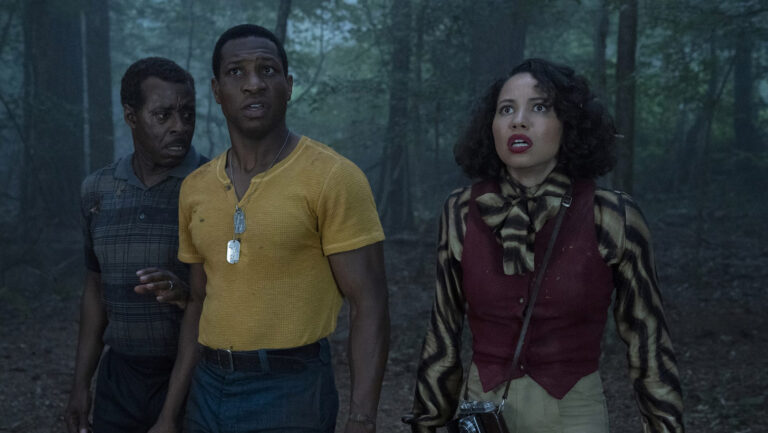Rodriguez was so passionately committed to realizing Miller's vision, in fact, that he hired the creator to act as co-director (thereby absolving Miller of his only previous cinematic sin, penning Robocop III). Furthermore, Rodriguez chose to shoot the entire film on an empty soundstage, allowing him to computer generate all the sets, much like last year's technological marvel Sky Captain and the World of Tomorrow. The result is a hard-hitting, hardboiled crime saga of eye-boggling visual panache. Call it “film noir to the Nth degree.”
Sin City wraps three of Miller's partially interlocking tales into one Pulp Fiction-like triptych. Bruce Willis plays a good cop sacrificing it all to save a little girl from a twisted rapist in “That Yellow Bastard.” Mickey Rourke plays Miller's unstoppable killing machine Marv in the original “Sin City” revenge-for-murder story. Clive Owen drops his accent in “The Big Fat Kill” to play another gun-toting good guy caught in a war between Sin City's prostitutes and its corrupt police force. Throw in Elijah Wood, Jessica Alba, Benicio Del Toro, Brittany Murphy, Rosario Dawson and what I'm pretty sure is Sarah Michelle Gellar's severed head, and you've got a pretty impressive bunch of people to flesh out this criminal collection.
Not only does Rodriguez replicate the “Sin City” stories but, with Miller by his side, he mirrors the exact look of the books almost panel for panel. Though film stock can't perfectly match Miller's ultra-stark black-and-white style (there isn't so much as a shade of gray in Miller's books), Sin City does feature a marvelous colorless cinematography style punctuated by the occasional slash of garish color (bloody red, for example, or sickly yellow).
There are pitfalls, of course, of being so slavishly faithful to the original source material. Comic books, by their very nature, are reductive. Amplified to big screen avatars, many of the characters have a hard time looking like anything other than overly simplified archetypes—hitmen, hired goons, bad cops, tough prostitutes. You almost wish Rodriguez' script had added a bit more meat to Miller's bones.
By a similar token, some of the hardboiled dialogue comes off rather stilted when spoken aloud. This stuff is like Shakespeare—nobody actually talks like this, and when it's done badly, it doesn't sound even remotely realistic. Some of the actors can pull this sort of thing off. Willis looks and sounds like he was born for his role. Michael Madsen, on the other hand, chokes on his lines like he's eating a bad Egg McMuffin. Still, when the film is singing along, it creates its own fully formed fantasy world stocked not with Medieval knights and dragons, but with bullet-riddled detectives and monstrous gangsters. I would say that Sin City offers a glimpse at the seamy underbelly of urban society, but this is a world with all seamy underbelly and no shining topcoat.
In shifting from the page to the screen, Miller's violence comes off especially rough and tumble. While Miller's static images of bloodshed retain a certain artistic distance, the walking-and-talking version packs a much harder punch. Even though it's rendered in black or white or yellow (in one case), the blood and gore is shockingly grisly. Take the film's R rating as a rock-hard warning. Sin City is not for young fans of Spider-Man looking for another dose of colorful heroic action. This is nasty fun for the adults.
In a so-far stillborn cinematic year, Sin City is hands-down the most innervating moviegoing experience we've had. Miller’s many fans will be quite satisfied, and curious newcomers who've never even heard of Sin City may just find themselves looking for a comic book store after the credits roll. With its jarring violence, its blunt storytelling and its rabidly original visual style, this is one sinfully delicious shocker.



